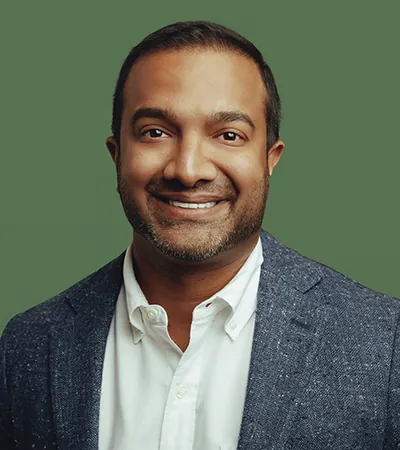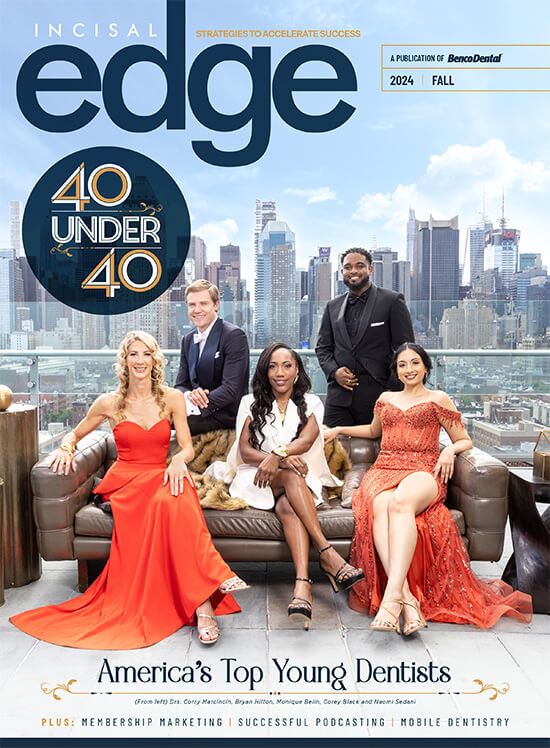Walmart’s former head of dentistry (and No. 7 on our 2020 list of the 32 Most Influential) talks about innovating access to care, business opportunities for today’s entrepreneurial dentists and his departure from the superchain.

That’s why it caught our attention when the retail juggernaut hired Dr. Roshan Parikh as head of dentistry in October 2019 in a move to better integrate dentist and physician health care at the company’s expanding Walmart Health centers—and in doing so, increase access to care. Given the vast health care deserts across America, and Dr. Parikh’s track record as a motivated executive and committed clinician, it seemed like a promising marriage of big money and entrepreneurial ingenuity.
But shortly after Dr. Parikh was named No. 7 on this magazine’s 32 Most Influential list for 2020, he moved on to other things—part of an exodus of nine Walmart health care leaders around that time, according to industry reports. You’ll forgive us for speculating that someone who thrives on the fast pace and limitless potential of startups might have found Walmart’s retail-centric culture a little too constraining.
Since few dentists will ever get an insider’s view of a company as big and generously resourced as Walmart, we wanted to know what others could learn from Dr. Parikh’s unique perspective and how it informs what he’s working on now. (The conversation below has been lightly edited for length and clarity.)
What happened at Walmart?
Given the solvency of Walmart, it operates differently than a traditional private equity [funded] or bootstrapped startup. Walmart Health has no pressure to deliver returns to investors in the short term and can operate the business unit as a loss leader while focusing on delivering a high quality of scale. Traditional market and investing economics push DSOs to a hold period of five to seven years to provide proof of concept and returns to investors.
Although I’m no longer at Walmart Health, I remain a fan and supporter of their long-term vision and mission. Walmart Health has continued its growth and now has a presence in four states. Six centers were added in 2022 and 16 additions are anticipated between Q1 and Q3 of 2023. Any large organization pursuing retail health services quickly realizes that health care services cannot be commoditized. Investment in tech-enabled applications can improve patient outcomes, but the foundation will always be laid by high-quality and compassionate providers.
Where do you envision that other big companies might leverage their money and footprint to make dentistry more available and affordable?
The U.S. health care industry is massive. Health care spending accounted for over 18.3 percent of U.S. GDP in 2021. Investments in the sector hit $22 billion in 2022 after a decline from $28.3 billion in 2021. Though the investment influx and volume of [mergers and acquisitions] activity fell in ’22, large deals were still made—the largest being Walgreen Village MD’s acquisition of Summit Health for $9 billion, CVS’s of Signify for $8.1 billion and Amazon’s of One Medical for $4.3 billion. Walmart has chosen a de novo model while many other top players are looking to gain market share through acquisitions.
There are advantages to large companies leveraging money and footprint as they move into health care. Their solvency allows them to singularly focus on gaining marketing share instead of short-term profitability, and savings are passed on to patients. These large players are looking to own the patient ecosystem, as they get a built-in, sticky customer base and can expand into other verticals once they acquire the patient—products, supplements and medication as a subscription service.
Larger hospital systems are looking to acquire DSOs similarly to how they moved into the urgent-care space. The goal is to retain and expand their patient base while creating more convenience, a one-stop shop for all medical and dental needs. Value-based proactive care will help increase affordability of procedures, as patients and providers will be incentivized for quality outcomes. Analogous to a safe driver discount, patients might get free products or services—an electric toothbrush, professional whitening. Providers would get a payout over 100 percent of their reimbursement rate. The cons of this model are that providers would be penalized for subpar outcomes, and there is an upfront time investment in unbillable codes such as nutrition and patient education.
Any large organization pursuing retail health services quickly realizes that health care services cannot be commoditized.
What can individual doctors do if they want to satisfy a dual mission to expand the care they offer while also succeeding as entrepreneurs?
Dental schools are focusing more and more on teaching business acumen. The rise of DSOs hasn’t alleviated the need for dentists to be business-minded but enhanced it. To be successful working at a large business, you have to understand the business.
Previously, if you wanted to understand and perfect the business side of dentistry, you took on two roles: chief dental officer and chief executive officer. However, as the competition and complexity in the DSO model increase, it becomes increasingly difficult to compete as a small business and new entrepreneur. Some of the most successful and in-demand providers I know work in small towns where they are one of only a handful of choices. Unfortunately, many younger providers want to work and live in large cities, which are highly saturated. For those in large markets, my advice would be to learn the business inside and out from those who have successfully started practices. You can then take those skills and open your own shop.
Are there any opportunities you see that dentist/entrepreneurs might be missing?
When I look at the world of retail health care today compared to 2004, when I received my MBA, I am no longer an anomaly as a dual-degree doctor. Marrying the clinical and business sectors has exploded in popularity, as have cash infusion and growth. I see the opportunity in being able to nest within the clinical trifecta: retail, health care and technology. The future of health care lies inside that convergence point.
About four years ago, you founded DSO Strategy. Your website says you created it to help entrepreneurial dentists strategize growth plans for their group practices and transform them into investable platforms for institutional capital. Why did you decide to get involved in this aspect of the business, and can you go into a little more detail about what you do?
Over the last five years, as the pace of consolidation continues to accelerate—in terms of velocity and quantity—something that I spend quite a bit of time thinking about is what tech stack is needed for emerging and smaller groups, DSOs, to be able to compete with billion-dollar, private equity-backed, large-scale companies. From that, DSO Strategy was born.
Present-day, we serve two constituencies, the first being emerging dental groups/DSOs that are looking to grow and scale. Through wisdom acquired from previous mistakes, we help them navigate the process of creating a scalable model and things such as a playbook and standard operating procedures, along with helping navigate how to have process trump people. The second constituency is software and product companies that want to be able to develop a value proposition to enter and succeed in the ever-changing DSO space. Everything from helping evaluate product-market fit, assisting to recraft the DSO value proposition, to helping look at what DSOs could be a synergistic fit, are some of the things we help with. That will help open more doors for others like me who are health care providers first and foremost but who also have a passion for growing and scaling health care businesses from the ground up.




